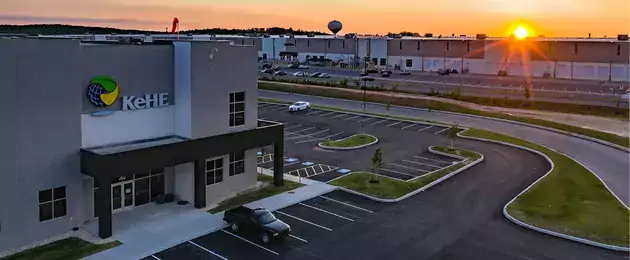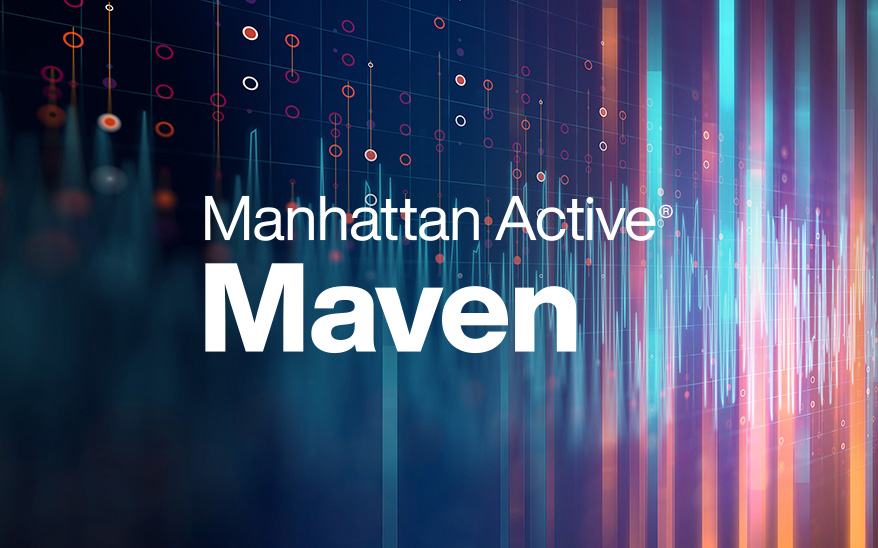KeHE Distributors Undergoes a Digital Transformation
- February 2, 2021
- By Steve Banker

This article originally appeared on Forbes.
Raj Govindarajan agreed to answer questions about KeHE Distributors digital transformation. Mr. Govindarajan is the Senior Director, Supply Chain at KeHE. KeHE is a national wholesale food distributor that has been in business for 70 years.
Steve Banker: Tell me about KeHE and KeHE’s supply chain!
Raj Govindarajan: At KeHE Distributors, we’re all about goodness. Our mission to SERVE and feed America is fueled by an obsession with natural & organic, specialty, and fresh products. KeHE is fulfilling that need with the help of 5,500 employee-owners and a 16-distribution center network across North America. Through KeHE’s 16-distribution centers and advanced supply chain technology, our people connect hundreds of suppliers to over 30,000 retail locations across the nation.
Banker: Manhattan Associates, a supplier of supply chain software, is the company that brought KeHE to my attention. You implemented Manhattan to solve a problem, what was the problem? Do you consider this part of a digital transformation?
Govindarajan: Our previous Supply Chain Purchasing and Inventory Management tools were not enabling us to solve business challenges, we pivoted to Manhattan’s Demand Forecasting and Inventory Optimization software. Our goal was to better service our partners through delivering robust demand and replenishment solutions. We needed a tool that could increase KeHE’s customer service level, optimize inventory levels and create an efficient end-to-end supply chain to support the growth of our customers.
As part of our goal to become the Next-Generation Distributor, implementing tools to provide best-in-class customer service is a large part of our digital transformation. Through forecasting and replenishment solutions, we can do just that.
Banker: Why did you select Manhattan Associates’ solution?
Govindarajan: We evaluated a handful of solutions. Ultimately (we) prioritized several factors in our decision: capability delivery, workflow flexibility, return on investment, and partnership with the software vendor. As software that is relied on by the distribution industry, we felt Manhattan’s Demand Forecasting and Inventory Optimization Solution provided all the capabilities we needed to better serve our customers.
While we looked at numerous factors, the key to our decision centered around a software vendor’s ability to provide quick solutions. Through Demand Forecasting and Inventory Optimization (DFIO), the tool provided all the capabilities in one spot. It has forecast management, inventory and order optimization solutions which enabled high speed to market and realization of benefits through several KPIs for us.
Banker: No implementation of an enterprise application goes completely smooth. Please discuss people, process, or technology issues that needed to be overcome!
Govindarajan: Implementation of new software comes with its challenges. Through the process, we were faced with design and requirement misalignment, aggressive timeline and quality testing challenges, scope containment, but most importantly we ran a huge portion of our implementation during the COVID-19 pandemic. This unexpected challenge forced us to work remotely, which is not common in the industry. While the implementation process did not go as smoothly as planned, I strongly believe the R.A.R.E. (Remain Relational, Act like Yourself, Return to Joy and Endure Hardship) leadership approach, that is embraced and instilled in the organization, helped us tremendously. By living and breathing these philosophies, our senior leaders helped the team persevere through the hardship to accomplish the implementation goals.
In the end, our team of dedicated KeHE employees made it successful. They’re positive change agents and champions of the brand. For future employees, we created a best-in-class training program and engaging communications to generate buy-in amongst teams and a successful launch. For example, we created a naming contest enabling employees to select the name F.R.O.S.T. (Forecast Replenishment and Operational Support Tool) for the supply chain solution, which is now the company-wide term we use for the tool.
KeHE, first-to-market, implementation of Manhattan’s Key Customer Forecasting and Customer Centric Inventory Optimization had some initial product challenges; however, with Manhattan’s partnership, we were able to address these opportunities in the early stages of the pilot. After overcoming some of these key challenges on the technology front, we were ultimately able to leverage better forecast management. By prioritizing forecasts and order exceptions, this created meaningful impacts on the business and helped increase KeHE’s service level.
Banker: What benefits did you achieve?
Our ROI measurement was challenging because of COVID-19 as most of the deployment happened through the pandemic timeframe. We experienced challenges due to the pandemic such as forecasting challenges, operational challenges to adapt to demand, supplier challenges to keep up with demand, etc.
Our business case involves a net benefit of 25 bps of Service Level improvement, 5% Inventory Reduction and 5% reduction in Spoils.
The two pilot distribution centers (DCs) that we deployed and ran through the HOT COVID (March & April) timeframe showed a 370 bps improved service level compared to the other DCs that did not run in Manhattan’s solution. Throughout the rollout to all DCs, we consistently saw a better performance in service level after about 6 weeks of deployment when we compared the service level to DCs that did not run in Manhattan’s solution.
The first DC went live in January 2020 and we completed all 14 DCs in September 2020. Measuring the KPIs for 9 DCs in this timeframe by comparing the Pre and Post KPIs of each DC’s rollout by 6 weeks, we realized a Service Level benefit of at least 100 bps and Spoils Reduction of 15%. Another main KPI for the business case was Inventory Reduction, but with the strategic alignment to support customer sales especially through COVID timeframe, we resulted in 1.81 days of additional inventory.
We strongly believe as we get through COVID and incorporate more fine-tuning of solutions, we will see great results with Inventory reduction and will accomplish the expected business results.
Banker: What comes next?
Govindarajan: Several additional capabilities are in the pipeline to be implemented along with plans on fine-tuning and optimizing several parameters. Some capabilities like Emergency and Over Stock transfers to transfer inventory within our network, and also cost-based optimization decisions to enhance Distribution Efficiency.
In addition, there are several key and advanced features that uses Machine Learning and Artificial Intelligence around Automatic Forecast Tuning, Promotional Forecast through Causal Factors are being discussed for future considerations.
From a process perspective, we have listened to our customers and are looking at building better guardrails for our buyers to manage (buying based on) optimal order cycles for the several thousand suppliers that we have, more controls to manage spoils, fine-tuning of parameters to maximize our off-invoice benefits through vendor deals/promotions. (All of these things) are being discussed.
Banker: What advice would you have for others that might be considering a similar project?
Govindarajan: Define the business problem, create engaging training, have a strong partner, and allow time for testing. With a clear understanding of the business problems and solutions needed, we were able to easily gain senior leadership buy-in and support. The transparency and clear communication, especially with a cross-functional team, were one of the many keys to our success.
Through change management and training, we were able to engage the team members who would be using the solution on a day-to-day basis. While it is always a challenge to adapt to a new process, the training alleviated some of those traditional pain points.
Working with a strong partner can smooth the process as well. Through our partnership with the Manhattan team (R&D, Product Development, Professional Services, etc.) we found customized solutions to areas that did not meet our business needs.
We believe you must go slow to go fast, meaning that it is important to take time for testing and gathering feedback throughout the piloting portion. This allows for candid feedback from stakeholders and enables them to validate the solution before deployment. Building skillsets, planning resources, and taking time in the project are all crucial components. Consider testing on all fronts including unit testing, functional testing, integration testing and global testing to ensure integrity.
Banker: Any final thoughts?
Govindarajan: We encourage everyone to think about system implementation as People projects. A heavy focus on training and change management and programs to support the demand planners and supply planners will make the transition smoothly and is critical to the implementation journey. It is People, from all aspects, that made the project a successful one more than anything else. To us, it is very important to work collaboratively across all functions so that we can ensure better service for our customers.
Banker: Thank you very much for taking the time to answer my questions.
STEVE BANKER BIO
I am the Vice President of Supply Chain Services at ARC Advisory Group, a leading industry analyst and technology consulting company. I engage in quantitative and qualitative research on supply chain management technologies, best practices, and emerging trends. I’ve been published in Supply Chain Management Review, have a weekly column in Logistics Viewpoints (www.logisticsviewpoints.com), and can be followed on Twitter @steve_scm or contacted at sbanker@arcweb.com.





